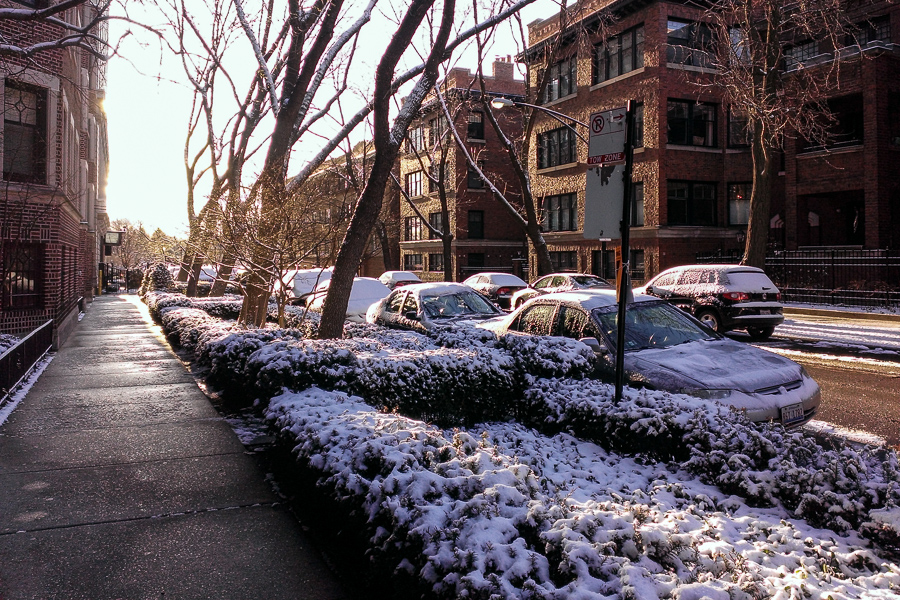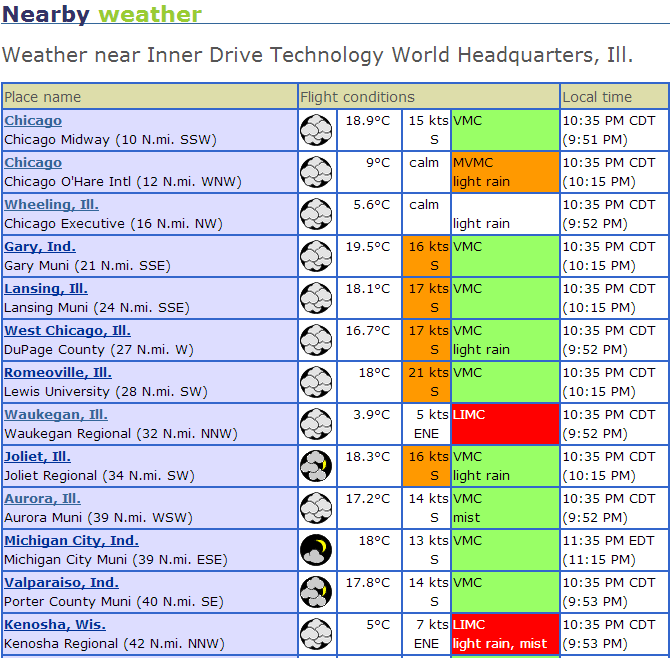CTA service on the Skokie Swift (now Yellow Line) began 20 April 1964:
The five-mile-long Niles Center branch of the ‘L’ had opened in 1925. Using the tracks of the North Shore electric interurban line, trains ran from Howard-Paulina station to Dempster Street in the suburb of Niles Center (today’s Skokie). There were seven stops between the terminals. North Shore continued to run trains after CTA service was discontinued in 1948.
In 1963 North Shore itself went out of business. During the fifteen years since CTA had eliminated the Niles Center branch, Skokie and other nearby towns had enjoyed a population boom. Perhaps the old ‘L’ line could now earn some money.
CTA’s new plan was to make the line a feeder to the mainline North Side ‘L’. Trains would run express between Dempster and Howard, with no intermediate stops. In a savvy bit of marketing, the re-born service was named the Skokie Swift.
Service officially began on April 20, 1964. Ridership surpassed all expectations, and CTA soon increased the number of trains. Today the route is known as the Yellow Line.
Before 1963, the North Shore Line actually ran trains all the way up to Mundelien.
I just returned from Outer Suburbistan in record time, in under an hour, which was pure dumb luck. As soon as I change I'm going out into the 25°C afternoon. We still haven't hit the 28°C we last saw November 7th, but this is close enough for me.
More later, including possibly some interesting stuff about how I've started (slowly) refactoring the 10-year-old Inner Drive Extensible Architecture to use modern inversion-of-control tools including Castle Windsor and Moq. First, I need to walk the dog. A lot.
Crain's reported today (sub.req.) that Lagunitas Brewing will cap their first Chicago-brewed beer today:
Workers at the 300,000-square-foot Douglas Park facility are firing up the bottling line this morning and slapping on Lagunitas India Pale Ale labels. Once they flip the switch, the line will fill 500 bottles a minute.
"It's just the IPA right now," said owner Tony Magee. "It's the beer we know best."
The first 750-barrel batch of beer was mixed a few weeks ago before heading to the brewery's fermenting tanks and filtration system. Other batches of IPA are right behind as production begins to ramp up. The Chicago brewery is set to start making Little Sumpin' Sumpin' beer next month.
Crain's also reports that Lagunitas is now Illinois' largest brewer, with a capacity of 200,000 barrels—23.5 million litres—per year.
After years of doing whatever they were doing, the CTA has released details of its planned Red and Purple Line renovations north of Belmont:
We already know the first phase of the project, set to begin in 2017, will involve rehabbing the Lawrence, Argyle, Berwyn and Bryn Mawr Red Line stations and replacing tracks for the Red and Purple Lines at those stations to reduce slow zones. CTA has started the process of securing federal funding to extend the Red Line from its current southern endpoint at 95th Street to 130th Street, using existing freight rail tracks. That project would cost $2.3 billion.
The aspect of the Red/Purple Line rehab we’re most impressed by is a “Belmont bypass” allowing the Brown Line to continue along its route by riding above the existing Red and Purple Line rails. Currently the Brown Line has to negotiate its route by crossing those rails, resulting in 40 percent of weekday trains being delayed by up to three minutes.
In order for the bypass to be built CTA will have to buy 16 buildings between Belmont Avenue and Addison Street in order to make room for the project. The total cost of the Belmont bypass is included in the $1.7 billion cost the first phase of Red and Purple Line rehab is expected to cost.
The CTA says the bypass project will save 500,000 passenger-hours per year.
This lovely spring morning in Chicago:

It's April 15th. And we have snow on the ground. Again.
At least we got a new record:
Snow has historically been no stranger in Chicago during the month of April. Official snow records indicate a trace or more of snow has fallen this late in 86 of the past 129 seasons dating back to 1884-85. That’s 67% of the time.
But the amount of snow which fell Monday and the fact it occurred within 3 days of 27°C warmth (on Saturday) and on a day which opened near 20°C is without precedent. Neither has occurred before over the 129 year term of official Chicago snow records.
Monday’s preliminary snow totals through 10 pm came in at 30 mm at O’Hare and 25 mm at Midway.
The 30 mm tally at O’Hare equals the amount of snow which typically falls over the full month of April and was the heaviest official snowfall to occur here so late in a season in 3 decades.
Winter, you're drunk. Go home.
I just took Parker for his evening constitutional, and discovered it's really warm out. My kitchen thermometer says it's 17°C, but the official temperature at O'Hare is 9°C. That's...unusual. In fact, here's what the weather near me looks like:

So, O'Hare and Midway, which are about 25 km apart, have a temperature delta of fully 10°C. If you look at a slightly more distant pair, say Waukegan and Gary, which are both on Lake Michigan but separated north-to-south by less than 100 km, the temperature delta is almost 16°C. That is one hell of a cold front.
And it's coming...this...way...
Just this morning I wrote about how warm the weather had gotten (finally!) but how it would get cooler throughout today.
Well, between 10:45 and 11, while I was in the grocery, the wind shifted, plunging the temperature 7°C and making me suddenly under-dressed. Plus, it's foggy.
Spring, we hope, will return in two weeks.
Yesterday Chicago got up to 27°C, one more "warmest day since November 7th." We've had a few of those recently. (November 7th got up to 28°C.)
It stayed relatively warm overnight, though, so for the first time in half a year I got to have dinner outside. This morning it's still warm enough to go outside without a jacket.
But this is Chicago. The forecast calls for falling temperatures and rain starting this afternoon, falling to 3°C tonight and slipping below freezing Monday night. With snow.
Sitll, for the next few hours, we have some sun and some warmth, so Parker and I are going outside for a bit.
Forget the Kennedy Expressway during rush hour; Chicago's railroads are worse:
Come to the west side of Chicago to
find out why a power plant in Michigan is short of coal and a
biodiesel maker in Brewster, Minnesota, can’t get enough grain.
The answer is found near Western Avenue, where rail cars
from Archer-Daniels-Midland Co. (ADM), the largest U.S. publicly
traded ethanol producer, rest idle on the track above the Dwight
D. Eisenhower Expressway. A short drive away a burnt orange,
yellow and black locomotive from Warren Buffett’s BNSF railway
sits on an overpass as motor traffic is snarled below.
They can’t move because increasing oil production from
North Dakota’s Bakken field, a record grain crop and
unprecedented cold weather overwhelmed the U.S. railroad system.
In part because of transport delays, coal inventories were down
26 percent in January from a year ago. A quarter of all U.S.
freight rail traffic passes through Chicago, or 37,500 rail cars
each day. The trip through the city can take more than 30 hours.
This has pushed up coal prices and cut coal consumption, which Bloomberg sees as a problem but I'm not so sure actually is. Also, BNSF is spending $5 billion on service upgrades near the oil fields, including adding 500 locomotives, 5,000 rail cars, and 300 crew members.
Via Illinois State Climatologist Jim Angel, Australia's weather service has observed a growing ENSO event that has implications for the U.S.:
It is now likely (estimated at a greater than 70% chance) that an El Niño will develop during the southern hemisphere winter. Although the El Niño–Southern Oscillation (ENSO) is currently neutral, surface and sub-surface ocean temperatures have warmed considerably in recent weeks, consistent with a state of rapid transition. International climate models surveyed by the Bureau indicate continued warming of the central Pacific Ocean in coming months. Most models predict sea surface temperatures will reach El Niño thresholds during the coming winter season.
Accuweather says not to worry:
While El Niño will not have an impact on this spring and summer's severe weather, it may come on early enough and strong enough to have impact on the upcoming hurricane season in the Atlantic and Eastern Pacific.
Disruptive winds, known as wind shear, often develop off the Atlantic coast of the United States and sweep over a large part of the basin during El Niño.
The greatest effects on the weather pattern in the Lower 48 states, including California, occur during the cold season.
El Niño winters are noted for wet and stormy conditions in the South and less-frequent, less-severe cold episodes in the Northern states.
There is a tendency toward dry conditions in the Northwest and North Central states during an El Niño winter.
A nice, warm, dry winter next year would be super. Here's hoping.